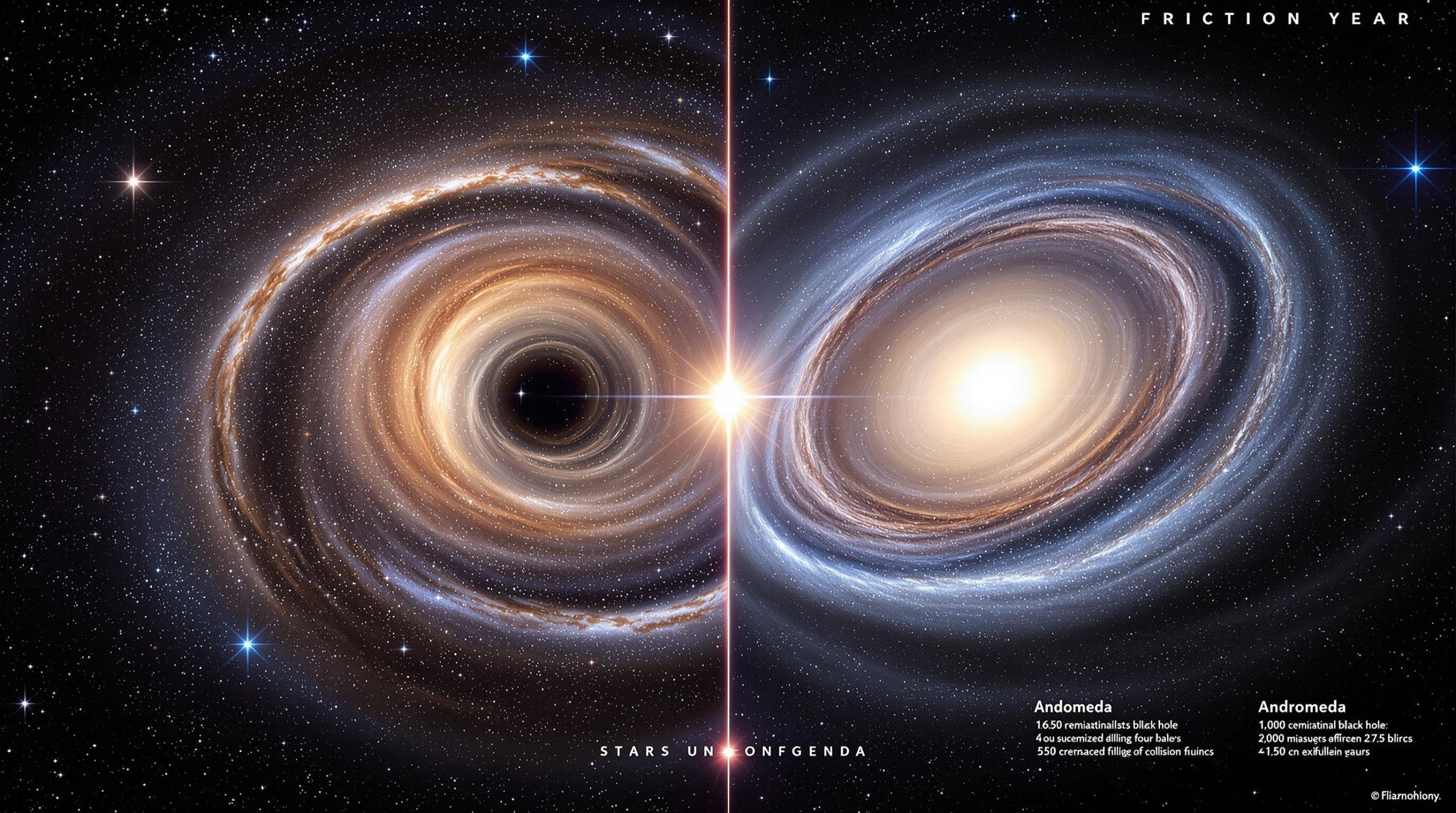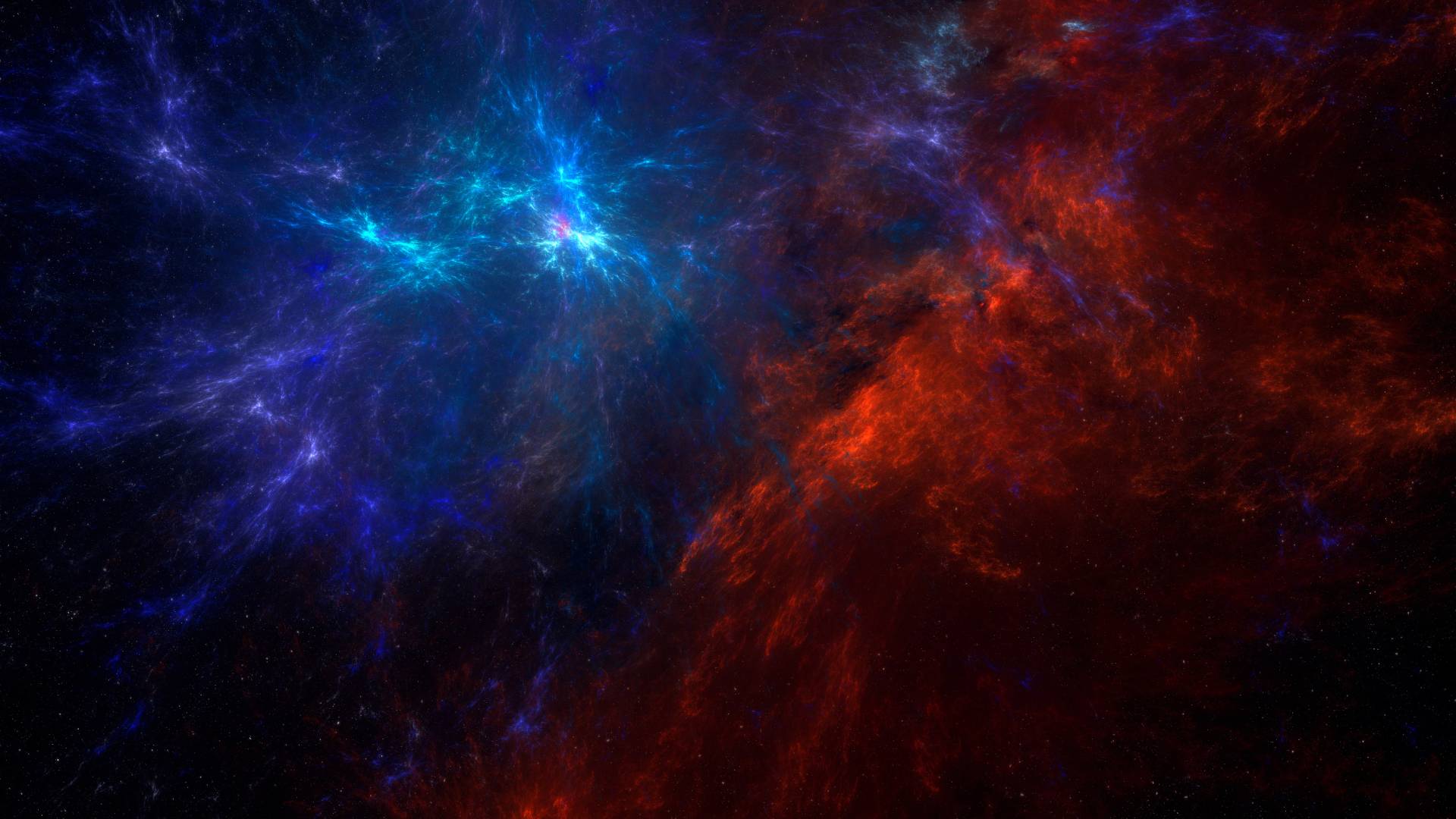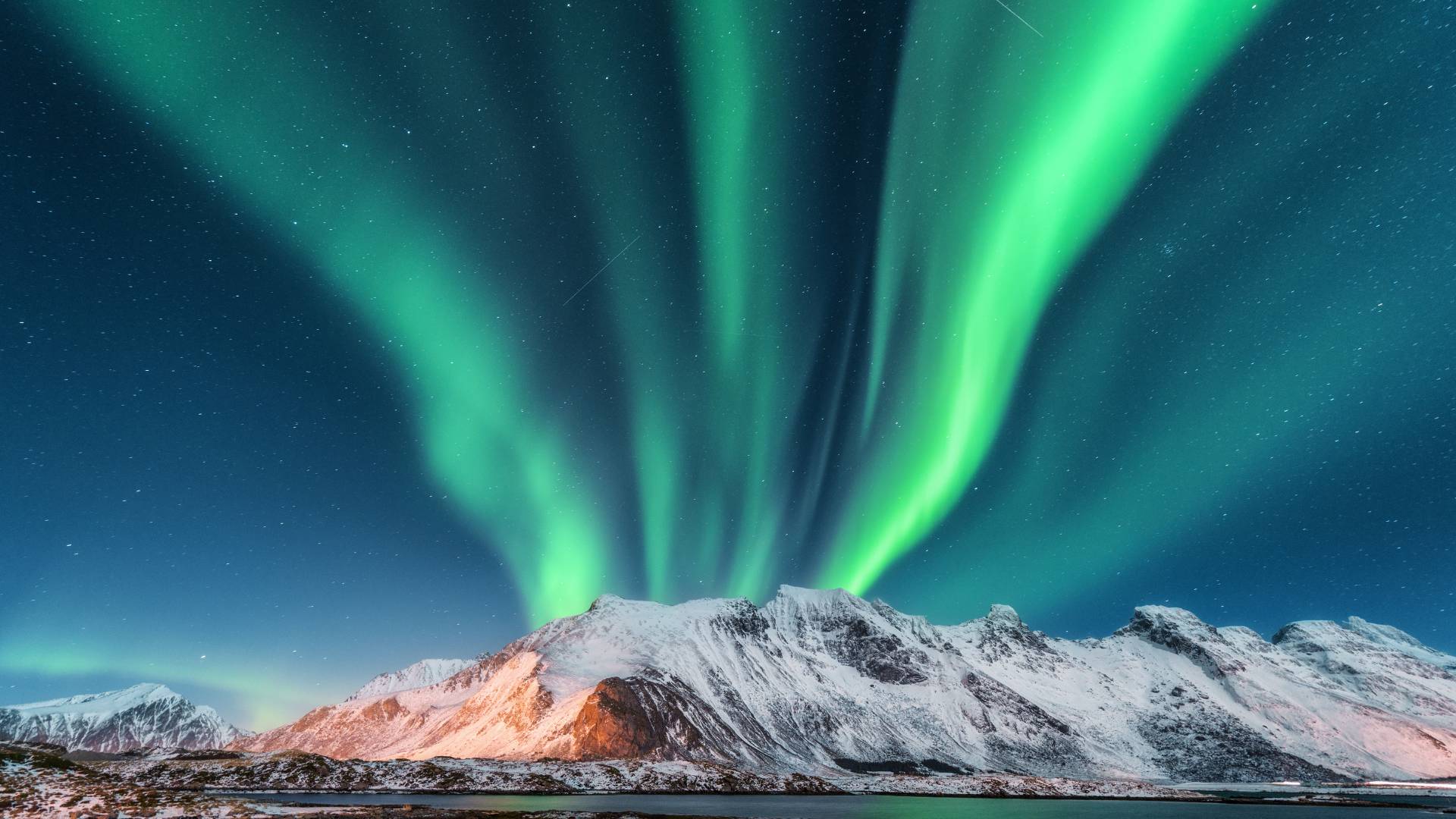The universe is vast and constantly evolving, but one of the most dramatic and inevitable cosmic events is set to unfold right in our cosmic backyard: the collision between the Milky Way vs Andromeda Galaxy (M31). This massive event, happening billions of years from now, will reshape both galaxies and create an entirely new one. stay with Spaceyv
But what does this mean for our solar system? Will Earth survive? And how do we know this collision is coming? In this article, we’ll explore the fascinating details behind the Milky Way-Andromeda collision, when it will happen, and what its effects will be.
1. Meet the Contenders: The Milky Way and Andromeda
Before diving into the details of their inevitable collision, let’s first understand the two galaxies involved in this cosmic encounter.
The Milky Way Galaxy (Our Home)
- Type: Barred Spiral Galaxy
- Size: ~100,000 light-years in diameter
- Stars: ~200-400 billion
- Mass: ~1.5 trillion times the Sun’s mass
- Location: Part of the Local Group of galaxies
- Speed: Moving toward Andromeda at ~110 km/s (68 miles/s)
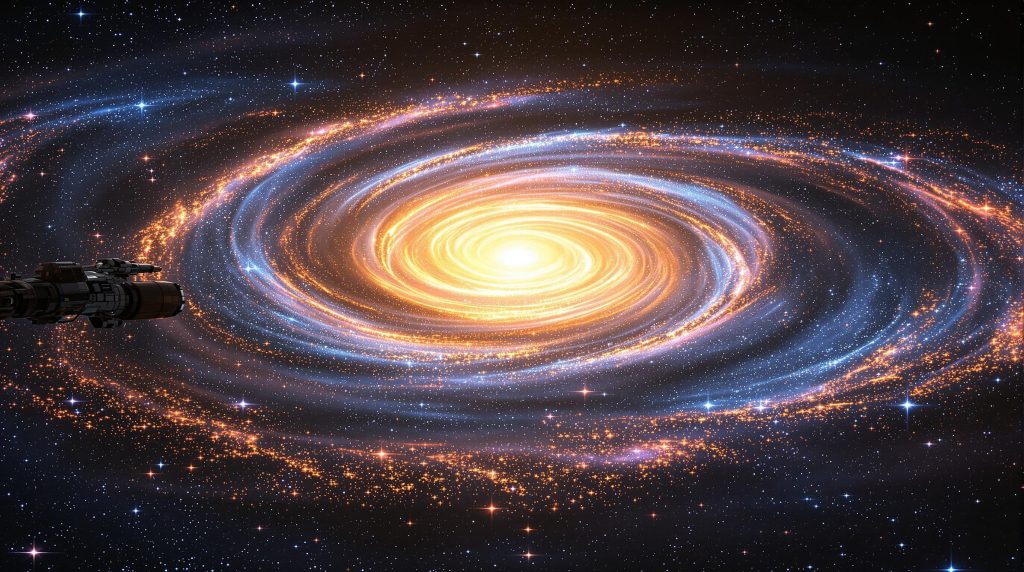
The Andromeda Galaxy (M31, Our Neighbor)
- Type: Spiral Galaxy
- Size: ~220,000 light-years in diameter (larger than the Milky Way!)
- Stars: ~1 trillion
- Mass: ~1.5-2 trillion times the Sun’s mass
- Distance from the Milky Way: ~2.5 million light-years
- Speed: Moving toward us at ~110 km/s (68 miles/s)
Both galaxies are members of the Local Group, a collection of over 50 galaxies bound together by gravity. Andromeda is the largest and brightest galaxy in this group.
2. Why Is Andromeda Heading Towards the Milky Way?
You might wonder: if the universe is expanding, why are the Milky Way and Andromeda on a collision course?
The answer lies in gravity. While the universe is expanding, gravity can overpower this expansion at smaller cosmic scales, such as within galaxy clusters. The Milky Way and Andromeda are gravitationally bound to each other and are being pulled together at a staggering speed of about 110 km/s (250,000 mph)!
Astronomers have confirmed this collision using:
🔭 Hubble Space Telescope (HST) – Observed Andromeda’s motion toward us.
🌌 Doppler Shift Measurements – Show a blue shift in Andromeda’s light, meaning it is moving closer.
📡 Computer Simulations – Predict how the galaxies will interact and merge over time.
The collision is inevitable—but don’t worry, it won’t happen for another 4-5 billion years.
3. What Will Happen During the Collision?
Phase 1: Initial Encounter (~4 billion years from now)
- Andromeda will appear larger in the night sky as it gets closer.
- The outer halos of both galaxies will begin to mix.
- Intense gravitational interactions will start distorting their shapes.
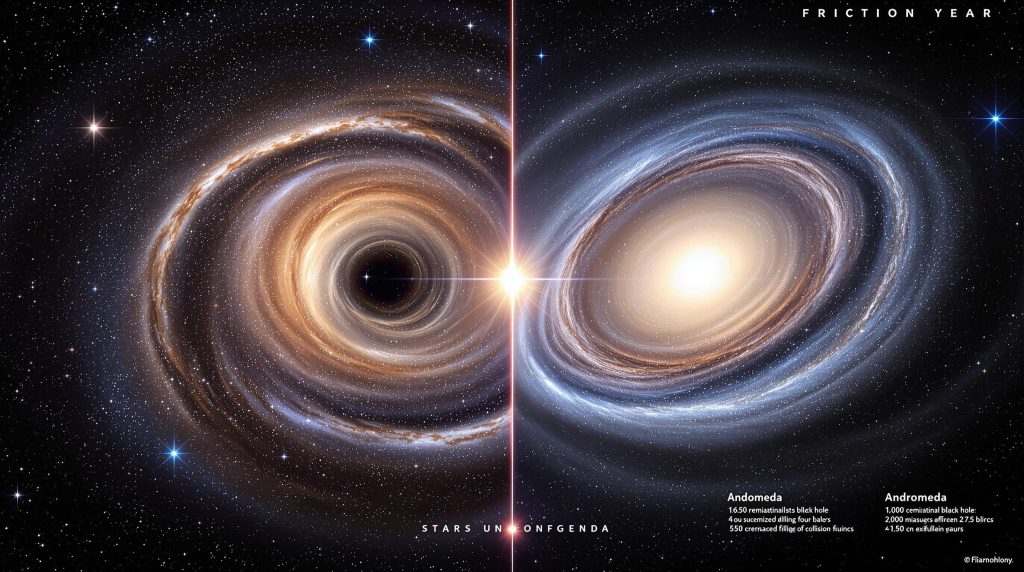
Phase 2: Galactic Collision (~4.5 billion years from now)
- The two galaxies will collide, but stars will rarely collide due to the vast space between them.
- Huge clouds of gas and dust will interact, triggering intense star formation.
- The supermassive black holes at the centers of both galaxies may merge.
Phase 3: Merger and New Galaxy Formation (~6-7 billion years from now)
- Over the next millions of years, the Milky Way and Andromeda will merge into one giant elliptical galaxy, sometimes called Milkomeda or Milkdromeda.
- The once distinct spiral arms will disappear.
- The new galaxy may resemble a massive elliptical galaxy, similar to those found in dense galaxy clusters.
4. Will Earth and the Solar System Survive?
Yes, but with some dramatic changes.
Possible Outcomes for Earth:
✅ Low Risk of Collision: Stars in both galaxies are so far apart that direct star-on-star collisions are extremely unlikely.
🌠 Night Sky Will Change: As Andromeda gets closer, it will dominate the night sky—becoming brighter and larger.
🔥 Star Formation Increases: Gas clouds colliding will ignite bursts of star formation, creating new stars and planetary systems.
🕳 Black Hole Interaction: If the Milky Way’s black hole and Andromeda’s black hole merge, it could release enormous gravitational waves.
🌞 Solar System’s Fate: The Sun, by this time, will be nearing the end of its life (becoming a red giant in ~5 billion years). This means life on Earth may already be unsustainable by the time of the merger.
So while our solar system is likely to survive the collision, life on Earth may not due to the natural evolution of the Sun.
5. What Happens After the Collision?
After the merger, the Milky Way and Andromeda will cease to exist as separate galaxies. The new galaxy will be:
🔵 Elliptical in shape (no more spiral arms).
🔵 Much larger and more massive than either the Milky Way or Andromeda alone.
🔵 Calmer, with fewer new stars forming due to the exhaustion of gas.
🔵 Dominated by a supermassive black hole at its center.
Nearby smaller galaxies (like the Triangulum Galaxy, M33) may also join the merger, further increasing the new galaxy’s size.
6. Have Galactic Collisions Happened Before?
Yes! Astronomers have observed many galaxy mergers across the universe, providing insight into what will happen when the Milky Way and Andromeda collide.
Famous Galaxy Collisions:
📌 The Antennae Galaxies – Two colliding galaxies showing chaotic star formation.
📌 NGC 2623 – A late-stage merger resembling what Milkomeda may look like.
📌 Messier 87 (M87) – A giant elliptical galaxy formed from past mergers, similar to what our galaxy will become.
7. Conclusion: A Cosmic Dance in the Making
The collision of the Milky Way and Andromeda is one of the most exciting events in our galaxy’s future. While it’s billions of years away, astronomers already have a clear understanding of how it will unfold.
Key Takeaways:
✅ Andromeda is moving toward the Milky Way at ~110 km/s.
✅ The collision will happen in ~4-5 billion years.
✅ Few stars will actually collide, but the galaxies will merge.
✅ The resulting galaxy, Milkomeda, will be an elliptical galaxy.
✅ Our solar system is likely to survive, but the Sun’s evolution may render Earth uninhabitable by then.
This galactic merger is a normal and inevitable part of the universe’s evolution. Millions of galaxies have already experienced similar fates, and one day, so will ours!
8. References
- NASA – Andromeda and Milky Way Collision
- URL: https://www.nasa.gov/andromeda-collision
- Details on NASA’s studies of the upcoming collision.
- Hubble Space Telescope Observations of Andromeda’s Motion
- URL: https://hubblesite.org/news_release/2012-20
- Hubble’s observations confirming the Milky Way-Andromeda collision.
- ESA – Galaxy Mergers and Evolution
- URL: https://www.esa.int/Galaxy_Mergers
- European Space Agency’s insights into galaxy mergers and evolution.
Would you like a visual timeline of this collision? Let me know! 🚀🌌

